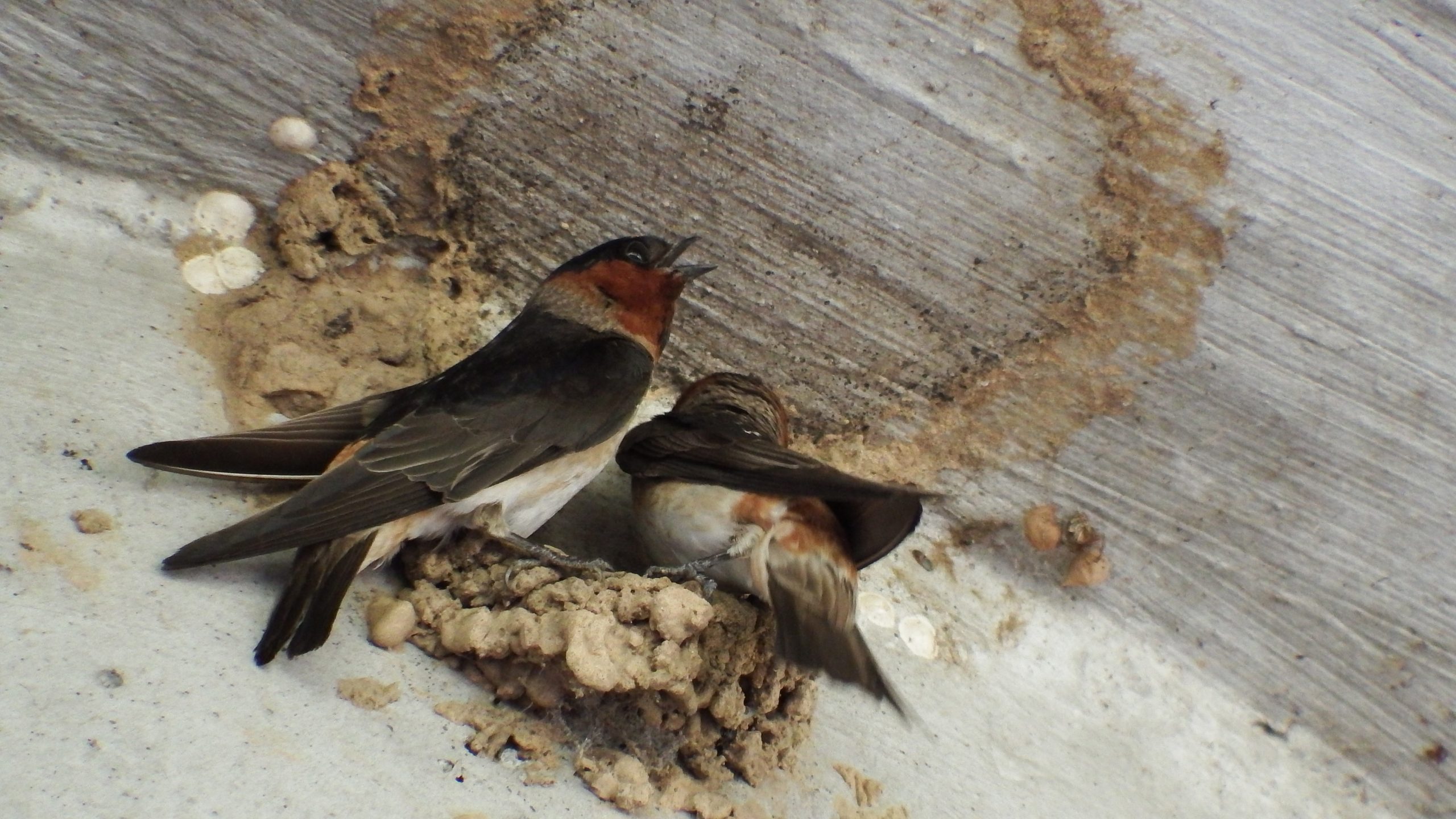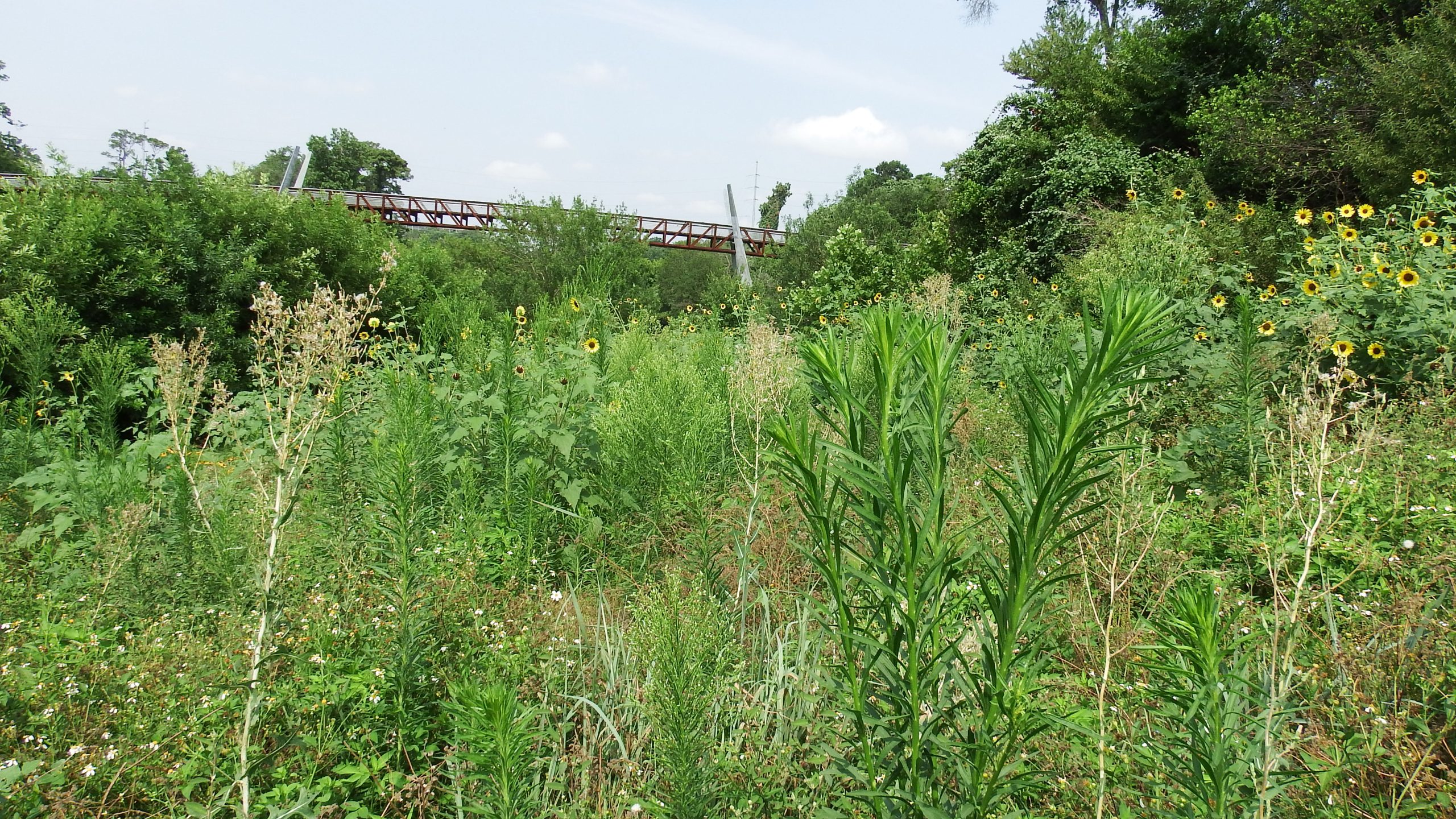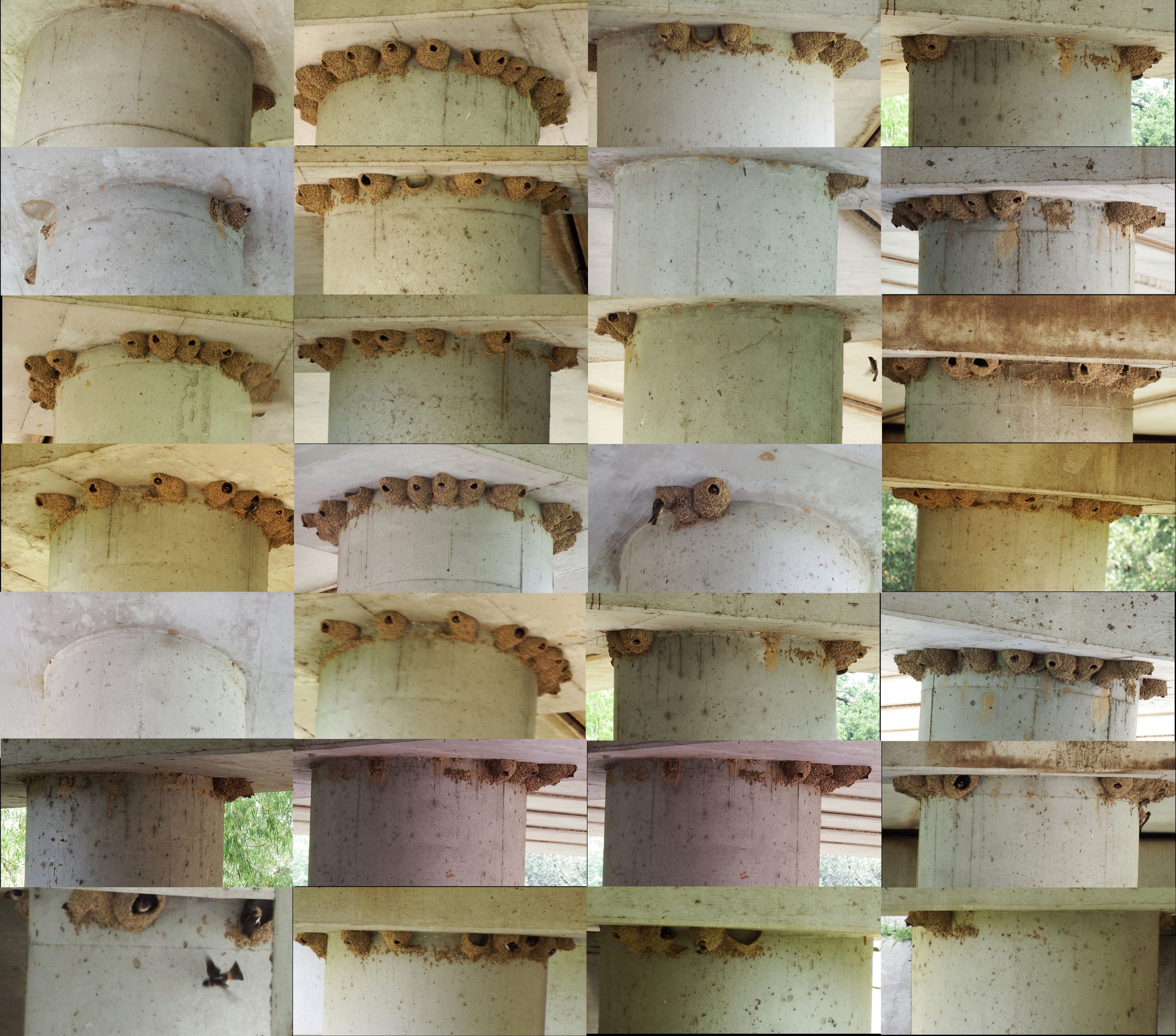As the cliff swallow colony turns…
Welcome back to the Cliff Swallow Chronicles. To catch you up with our story this far:
There has been a cliff swallow colony under the bat bridge forever. Our cliff swallows winter in South and Central America, return to their mud nests in Houston each year. Upon their arrival, they spiff up the nests and have kids. After a few months, they head back south.
In 2017, Harvey destroyed all the nests. When our swallows returned last March, they found no colony. They rebuilt, but not nearly as many nests as in earlier years. I don’t know if some of the returning birds decided to build elsewhere or if not as many birds returned. They are likely still here in August, so it’s possible they knew about the destruction of the nests.

This year, two years post Harvey, our swallows came back more or less on schedule. They built a few new nests, rehabbed the old ones and started having chicks. The colony was still much smaller than it was before Harvey, but everything seemed normal.
In early May, the swallows surprised me by starting a second colony under the Studemont bridge.
Since this was getting strange and because, from time to time I like to think of myself as a real naturalist, I counted the nests in the original colony. I counted ten nests that were occupied, four more unoccupied and three unfinished. Then I got interested in things not under the bat bridge. My mistake.
My first mistake, anyway. My second was wading up to my waist in an amazing field of flowers, thinking that I would find a blog post in there.

What I found was that I had covered my shirt and pants in scratchy burrs. The itchiness from this prevented me from noticing right away that I was standing in ants; something I couldn’t see because of the waist-deep flowers.
Back on the path, madly brushing both ants and burrs from my person, I ran into William who shares my enthusiasm for living things. He mentioned that there was a lot of activity at the swallow colony. Rather than wade back into the deadly flower patch (which I was prepared to do!), I decided to take a walk under the bat bridge.
William was on to something. The original colony was insanely busy and had clearly been so for weeks. Instead of the fourteen nests I had counted six weeks ago, there are now 137 nests (give or take). This is heartening and amazing. But what the heck is going on?

All the nests more or less. We went from 14 to this in a month!
The recurring theme of the cliff swallow chronicles is that I have no idea what is going on. Cliff swallows are humbling birds for a naturalist.
The first question that needs answering is where did all these new birds come from? It is June. Before starting this blog, I didn’t mark the date of the cliff swallow arrivals, but I always knew they were there and that the colony would be humming by April. This is a huge influx of new birds months after they usually arrive. Perhaps they are refugees from a nearby colony that failed. Or fashionably late arrivals from the winter grounds.
Whoever they are, I am very glad to see them. The cliff swallow colony is larger than it has ever been. These birds can be seen without any binoculars from the path on the south side under the bat bridge. It is a truly amazing sight.
The splinter group under the Studemont bridge hasn’t seen any increased population. The birds that nested there are still there, peacefully raising chicks. But I haven’t checked in a few days!
After the excitement at the cliff swallow colony, I spent time with our still-on-the-nest-but-not-for-long baby red-shouldered hawk. She was practicing flighty hops. It won’t be long now.
In this video, mom or dad delivers a lizard to our chick. Notice how our chick knows exactly what’s what. This might be the last time I catch the family in the nest, so I’m posting a video a bit longer than usual because I’m having trouble saying goodbye.

